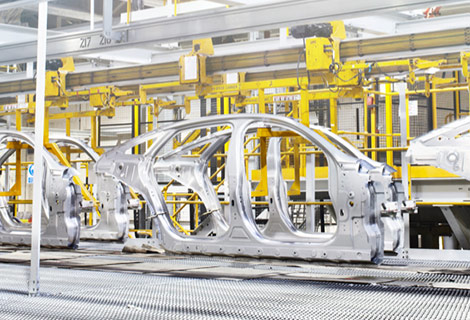Lightweighting
Engineering is a series of possibilities and tradeoffs. Aluminum, however, provides a way to reduce vehicle weight in order to realize greater fuel efficiency and reduced CO2 emissions while accommodating advanced technology needs — all without sacrificing safety, durability, or performance. Aluminum is up to 50% lighter than steel, providing myriad possibilities throughout the vehicle to find lightweighting opportunities. This is why some of the most visionary OEMs and vehicle models are leaning more and more on the power of aluminum.


Safety + Strength
Can a material be lighter while still protecting passengers? Can strength be retained while providing more formability? The answer to both questions is absolutely. The unique properties of automotive aluminum provide a tensile strength of up to 700 MPa. It also has a similar strength and durability profile when compared to steel, yet is capable of folding more predictably in a collision — allowing for enhanced crumple zones and better crash absorption.
Performance
Thanks to its lightweight and flexible properties, aluminum can provide drivers with better control and more precise handling, and allows for more powerful acceleration and faster deceleration. It is also more flexible and malleable, creating more innovative design opportunities, opening a new world of possibilities. That is precisely why aluminum can be found in everything from high-performance automobiles to an ever-increasing number of mass production vehicles, and is especially well-suited for electric vehicles.


Sustainability
Lightweight. Efficient. Sustainable. Aluminum is leading the way to a more sustainable future. To learn more about aluminum’s sustainable promise, visit our Sustainability Page.
